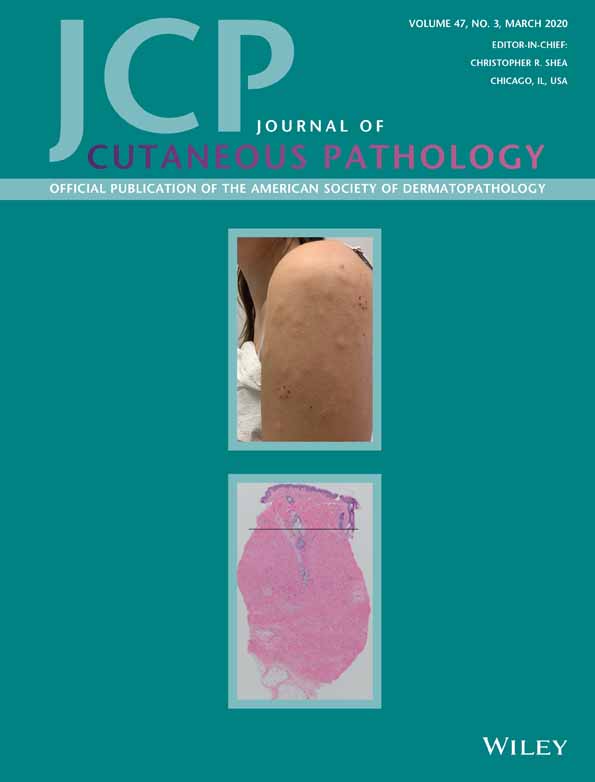Linear IgA dermatosis in association with angioimmunoblastic T-cell lymphoma infiltrating the skin: A case report with literature review
Abstract
Angioimmunoblastic T-cell lymphoma (AITL) is an aggressive form of peripheral T-cell lymphoma, characterized by systemic symptoms, diffuse lymphadenopathy, hepatosplenomegaly and immunodysregulation. Half of AITL is associated with cutaneous symptoms, but only few cases with bullous eruption have been described. Association with a linear IgA dermatosis is extremely rare. Linear IgA dermatosis can be idiopathic, or linked with drug intake or neoplastic disorders. Some cases of linear IgA dermatosis presenting as toxic epidermal necrolysis (TEN) have been described, most of them being drug induced. We here present the case of a 72-year-old man recently diagnosed with AITL who developed a bullous eruption, presenting as TEN. Histopathology showed deep cutaneous involvement of the lymphoma with a sub-epidermal blistering and direct immunofluorescence revealed a heavy IgA linear deposit on the dermal-epidermal junction. A diagnosis of linear IgA dermatosis associated with cutaneous involvement of an angioimmunoblastic T-cell lymphoma was made. Chemotherapy and corticosteroids allowed cutaneous improvement but the patient died of his lymphoma shortly after.
CONFLICT OF INTEREST
None declared.




